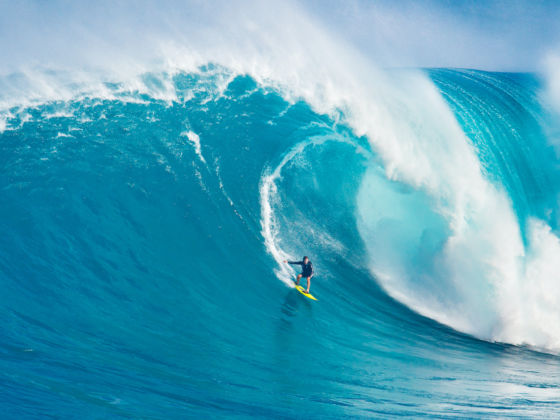What makes a wave dangerous? Is sheer size an accurate indicator for how hazardous a surf spot is? Read on for our roundup of the top ten most dangerous waves in the world.
1. Cyclops (remote south coast Western Australia)
This ultra square-shaped, below sea level, one-eyed monster tops the list for good reasons. It’s impossible to paddle into on a surfboard and almost unrideable towing behind a jet ski.
If you blow a wave here you’ll be washed straight onto the dry rocks, which is a bummer because the nearest medical help is hours away.
